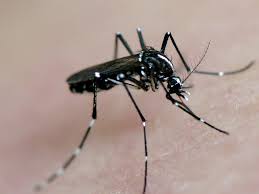
South Dakota’s peak transmission for West Nile virus (WNV) is now through the end of August and health officials are warning residents activity is already increasing.
“We are seeing a higher than normal number of mosquitoes test positive for West Nile this year and the number of human cases so far is already above our 10-year average,” said Dr. Lon Kightlinger, state epidemiologist for the Department of Health. “We can’t emphasize enough how important it is for people to protect themselves with insect repellent.”
South Dakota had reported 19 human WNV cases as of July 28 and Kightlinger said next week’s surveillance update will show cases continuing to climb. Cases have been reported in Beadle, Bookings (2), Brown (4), Codington, Davison, Douglas, Grant, Hamlin, Lincoln, McCook, Minnehaha (2), Spink (2) and Todd counties. There have also been positive mosquito detections in Brookings, Brown, Edmunds, Hughes, Lincoln and Minnehaha counties.
Kightlinger said South Dakota has a disproportionately high number of WNV cases and he encouraged residents to reduce their risk with the following precautions:
Apply mosquito repellents (DEET, picaridin, oil of lemon eucalyptus or IR3535) to clothes and exposed skin. Limit exposure by wearing pants and long sleeves in the evening.
Limit time outdoors from dusk to midnight when Culex mosquitoes, the primary carrier of WNV in South Dakota, are most active.
Get rid of standing water that gives mosquitoes a place to breed. Regularly change water in bird baths, outside pet dishes, and drain water from flower pots and garden containers.
Support local mosquito control efforts.
These precautions are especially important for people at high risk for WNV – those over 50, pregnant women, transplant patients, individuals with diabetes or high blood pressure, and those with a history of alcohol abuse. People with severe or unusual headaches should see their physicians.
For updated case numbers and prevention information see http://westnile.sd.gov.
Preventing and controlling infectious disease is one objective of the Department of Health’s 2015-2020 strategic plan, http://doh.sd.gov/strategicplan.
